Sandstone Vs Limestone – An In-Depth Comparison Guide
As two of the most popular stones in the world for paving, people often wonder whether they should use sandstone or limestone when paving their driveways, patios, or gardens.
While you can use both Sandstone vs Limestone to achieve similarly fantastic looks, there are many differences to consider in terms of cost, durability, and overall aesthetic.
Come dive in with us as we explore the major differences between sandstone and limestone that you should note when making your decision.
What Is Limestone?
Limestone is what we refer to as a sedimentary rock. It’s formed out of several organic debris, including algae, coral, and shells. However, it can also be formed with chemical processes, such as calcium carbonate precipitation from ocean water or lakes. Scientists develop much of the Earth’s chronology thanks to studying fossils that are deeply embedded in limestone.
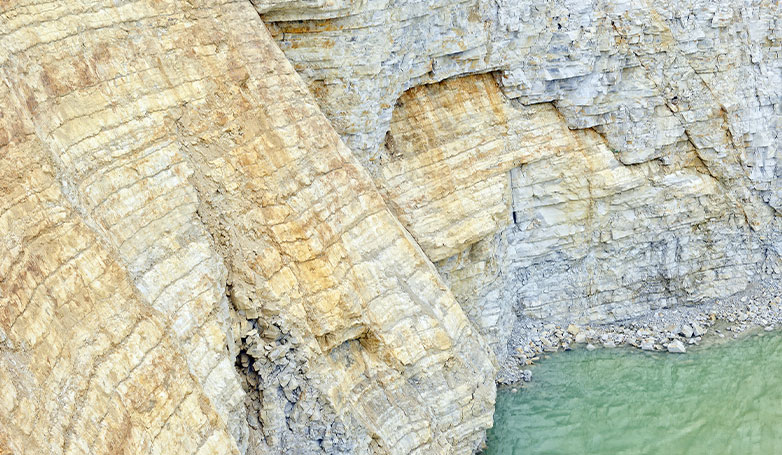
You can find most limestone in very shallow oceanic regions, such as continental platforms and shelves. While most limestone is gray, it can come in different colors depending on its natural composition, including brown, yellow, or white.
What Is Sandstone?
Sandstone is another type of sedimentary rock; its composition includes rock, minerals, and other organic materials. You can find sandstone all over the world, though there are large deposits in places like Germany, South Africa, and the United States.

Sandstone typically forms in the offshore regions of river deltas, where sand is deposited and buried. Over time, beaches and desert dunes can also leave large sandstone beds. While it is less widespread, scientists also often find fossils in sandstone.
In terms of color, you can find pretty wide-ranging fluctuations, moving from brown to yellow to red to orange.
Sandstone – How It Looks
Sandstone is fairly variable when it comes to textures and colors; it is a great option for those who want to go beyond uniformity. Many people feel that the color-grading found in sandstone is superior to that of limestone. No two pieces of sandstone will look the same.
Going for a golden sandstone is excellent for both indoor and outdoor projects.
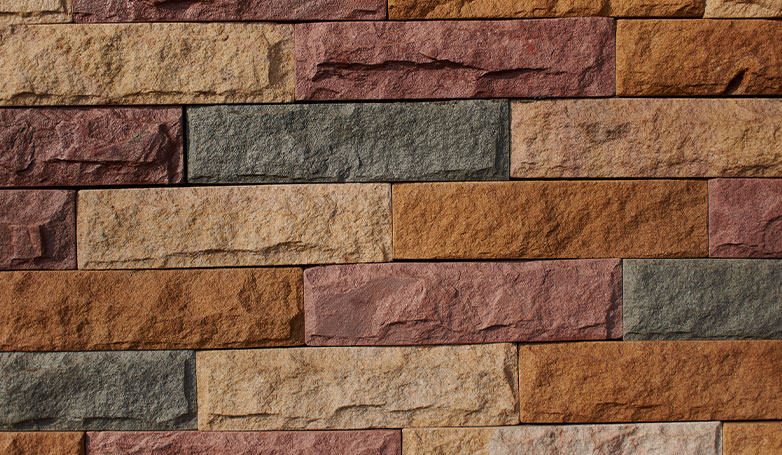
In terms of texture, sandstone is more uneven than limestone, giving you a rippled look. We love sandstone with a sawn finish, as it provides a very contemporary look, even more than limestone in many ways. On the other hand, you can get a grittier texture with a bit more slip resistance by sand-blasting your sandstone. You’ll often find this texture along poolsides.
Limestone – How It Looks
Compared to sandstone, limestone has a texture that once could describe as flat or consistent. For this reason, limestone has become one of the most popular choices for covered courtyards and driveways. With such an even finish, many people opt to use limestone for indoor applications too.
White limestone is one of the best choices if you’re going for a cleaner, more uniform look. However, while limestone offers a smooth, uniform look for the most part, you can potentially expect a slight color variation from piece to piece.
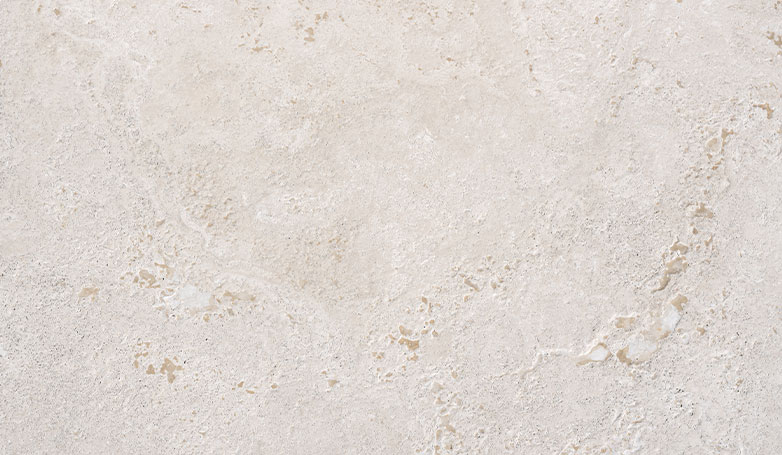
Compared to sandstone, you can expect fewer ridges with limestone. With its unique and natural characteristics, you almost get an orange peel-like texture from it, as well as a natural split surface look.
Cost Of Sandstone Vs Limestone
When it comes to the cost of paving something like a driveway, sandstone is your best bet.
If you can get locally-sourced limestone rocks, you won’t end up paying very much. However, the minute you begin paying for quarried travertine and marbles, it can become extremely costly.
This is one of the major reasons that homeowners often opt for sandstone, as the cost isn’t nearly as high. Sandstone is also cheaper than concrete and cement in most cases, especially when locally available.
Beyond that, sandstone is much easier to work with than limestone, concrete, or cement; it means you also pay less for labor costs. Overall, when it comes to the affordability of sandstone vs limestone, sandstone is a pretty clear winner.
Composition of Limestone and Sandstone
Limestone has a very chalky texture thanks to its calcite composition. Overall, the composition of limestone is pretty consistent and plain.
On the other hand, the composition of sandstone includes various rocks and minerals, such as quartz and feldspar. This sedimentary rock can vary from piece to piece, giving it a unique composition compared to limestone.
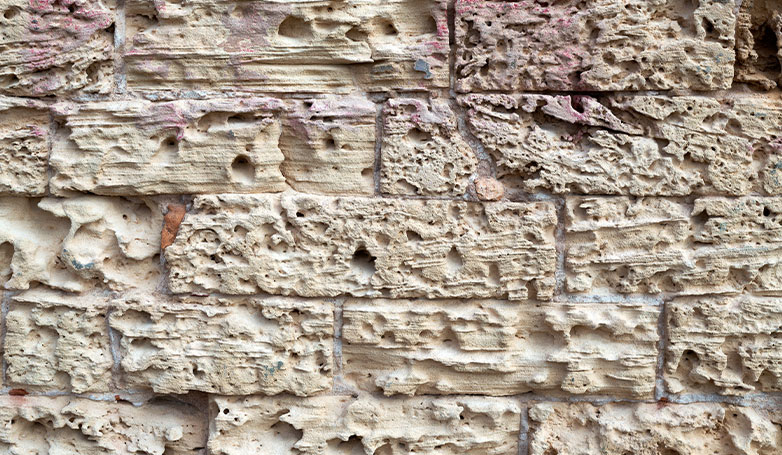
Sandstone Vs Limestone Durability
When it comes to the durability of sandstone vs limestone, both of these rocks are very sturdy and can last a long time under the right conditions. Both of these stones are able to endure tough weather, which is why they have become such popular choices for outdoor paving.
For generations, people used both of these stones to build large structures that still stand strong to this day. Beyond the similarities in terms of durability, sandstone is much easier to work with than limestone, as it is much softer. However, this also makes sandstone more susceptible to being scratched or dented, especially when using it for indoor projects.
On the other hand, sandstone is also denser than limestone, which is why you’ll see it in many construction projects.
It’s worth noting that because limestone is a calcite rock, it doesn’t mix well with strong acids. If you use strong acid washes on limestone, you can stain and ruin your limestone. With sandstone, you can clean and wash it with milder acids without much worry, though like Limestone, it doesn’t react well to very strong acids.
Another thing you might want to consider with durability is water absorption. Both of these rocks are fairly water-resistant, although sandstone is a bit more porous compared to limestone. When installing these rocks, especially in indoor applications, it’s important to apply some sort of sealant to the surface so that they aren’t as impacted by water.
PRO TIP
You might consider looking at the stones when they’re wet during your purchase. Doing so will give you a better idea as to which one best fit your requirements.
When all is said and done, we’d have to give the medal to limestone on this one. When you’re working with lightly-colored sandstone, it’s not surprising to see subtle differences when it absorbs water. While it won’t likely impact your stone that much, even the potential of a slight impact puts it just behind limestone.
Sandstone Vs Limestone Slip Resistance
Because sandstone has a naturally grainy and sandy texture, it is much more slip-resistant than limestone. We recommend using sandstone in areas that receive a lot of rainfall or areas that are consistently wet, such as around swimming pools.
That’s not to say that limestone is slippery, though polished limestone in indoor spaces should be avoided when it is wet, as it can be slippery to walk across.
Sandstone Vs Limestone Versatility
Both limestone and sandstone are ultra-versatile stones, which you can cut into various shapes and sizes for your need. No matter what kind of project you have, you can get these stones to fit within the bounds, which makes it quite difficult to find a “winner” in terms of versatility.
With such a wide range of colors and finishes, you can adapt these stones to just about any project.
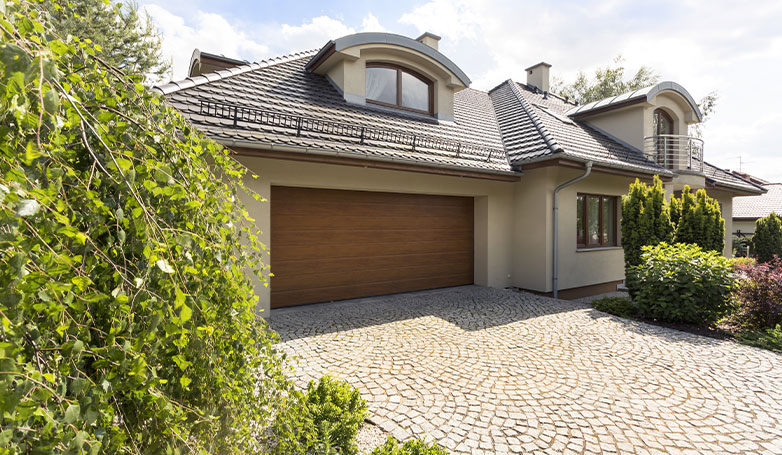
Which One Should I Choose?
With all of the information above, you should be able to determine which of these rocks better suits your project.
If you’re working on landscaping, steps, pathways, decks, patios, or other outdoor projects, locally available limestone rocks can be a great choice. If you want to add a touch of luxury to your indoor decorations, such as countertops, cladding, flooring, sculptures, or fountains, exotic limestone, travertine, and marble are excellent choices.
Just note that these will cost you a bit more than sandstone.
On the other hand, sandstone is a tried and true material that humans use since ancient times to build entire buildings. However, today, you mostly find sandstone on driveways, around swimming pools, on patios, or throughout pathways.
Conclusion
Limestone and sandstone have very similar properties. But there are clearly a few differences that can help guide your decision.
While both of these stones are very effective and eco-friendly choices, we highly recommend going with limestone for indoor projects if you have the additional money to spend, though if you’re looking for the best stone for an outdoor project that’ll give you color and variation, sandstone is an excellent choice.
Make sure to get in touch with us at Paving Finder if you need any further help in making the best decision for your residential or commercial project. We help homeowners and project managers make the best choices for their paving needs based on their budgets and requirements.


